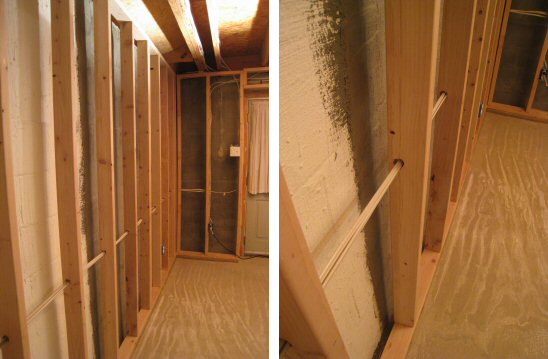Tape a one foot by one foot square of plastic sheeting plastic kitchen wrap will do to the concrete wall in your basement with duct tape and leave it in place for 24 hours.
How to use hydrostatic sheets on a basement wall.
The foundation wall of a building may be a cast in place concrete retaining or basement wall or a structural wall complete with load bearing pilasters.
Cove joint this is where the walls meet the floor and when hydrostatic pressure increases water can seep into your basement.
To relieve hydrostatic pressure around a basement you will need to tap into the source of the water by drill weep holes into the hollow cores of the bottom row of blocks.
Typical hydrostatic and soil pressures generally.
Water seepage through concrete basement walls is a common enough problem and a serious enough one to have created a healthy market for waterproofing paints.
I am confused as to how the dimple board relieves hydrostatic pressure on the basement wall.
Hydrostatic pressure loads may exist in cases of high water tables or flood events.
If so how does the water find its way from the ground through the dimple board to the other side where it can freely drain down to the foundation drain.
Mortar joints a mortar joint is the area filled with mortar between concrete bricks or blocks.
This will allow the water to drain now you need to install a baseboard system that will collect the water and drain it to your sump pump.
Floor cracks water can seep into a basement thru cracks that develop on the floor.
As a general rule hydrostatic pressure increases as subsurface depth decreases due to the increasing weight of earth and gravity generating downward force from above.
Materials used may be concrete or reinforced masonry.
These products may be oil or water based and they are heavier than conventional paints because they contain additives that promise to create an impermeable water barrier.
Then remove the tape.
Foundation walls frequently water will seep over the top of the walls of the foundation.










